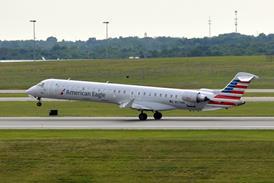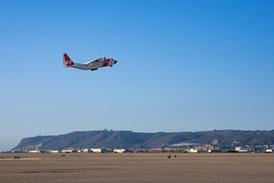Kate Sarsfield/LONDON
Adam Aircraft Industries is expecting an order boost after finally releasing the price of its M-309 six-seat pressurised piston twin, for which it has eight $25,000 refundable deposits already.
"The first 20 production aircraft will be priced at $695,000 including full glass instrument panel," says Tom Wiesner, Adam Aircraft's director of business development. He adds: "The aircraft is competitively priced, especially when you compare it to the $1.9 million Raytheon Beech Baron. We expect it will sell well." The manufacturer has yet to determine the price of the aircraft after number 20.
Denver, Colorado-based Adam Aircraft launched the Burt Rutan-designed M-309 last April. The aircraft's design was refined in September, with changes including a fuselage stretch to accommodate an airstair door forward of the wing and replacement of the overwing gullwing door (Flight International, 12-18 September 2000).
The company is one of the first to exploit the Federal Aviation Administration's new Certification Process Improvement (CPI) initiative. This is designed to simplify and reduce aircraft development costs by getting direction and feedback from the FAA early in the certification process. Wiesner says: "We expect the CPI will reduce development time and costs for the M-309 by up to 40%."
A proof-of-concept aircraft, built by Rutan's Scaled Composites, has completed 125h of flight testing since the first quarter 2000, and the first of two conforming certification-test prototypes is due to fly by mid 2001. The aircraft is scheduled for US certification in 2003, with European approval lined up six months later.
The programme is fully funded by owner Rick Adam who plans to produce a family of around six aircraft "within ten years". These are likely to include stretched nine- to 19-seat models to fill a niche in the corporate shuttle market. Wiesner adds: "As more airports begin to open up in the USA, there will be an increasing demand for aircraft of these sizes."
Wiesner anticipates great technological strides in engine, avionics and materials over the next 20 years which, he says, will drive down the cost of aircraft manufacture and operation. He concedes: "We are constantly looking at new designs - single, twin piston, turboprop and jet. We are ruling out nothing."
The M-309 is powered by two digitally controlled, 260kW (350hp) Teledyne Continental TSIO-550 piston engines mounted in a "push-pull" arrangement to provide centreline thrust. It will have a maximum speed of 250kt (465km/h), a gross weight of 2,500kg (5,400lb) and range, with instrument flight rules reserve, of about 2,780km (1,500nm).
Source: Flight International























